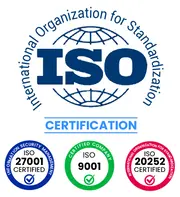

- Global Market Outlook
- In-depth analysis of global and regional trends
- Analyze and identify the major players in the market, their market share, key developments, etc.
- To understand the capability of the major players based on products offered, financials, and strategies.
- Identify disrupting products, companies, and trends.
- To identify opportunities in the market.
- Analyze the key challenges in the market.
- Analyze the regional penetration of players, products, and services in the market.
- Comparison of major players’ financial performance.
- Evaluate strategies adopted by major players.
- Recommendations
- Vigorous research methodologies for specific market.
- Knowledge partners across the globe
- Large network of partner consultants.
- Ever-increasing/ Escalating data base with quarterly monitoring of various markets
- Trusted by fortune 500 companies/startups/ universities/organizations
- Large database of 5000+ markets reports.
- Effective and prompt pre- and post-sales support.
Key Emerging Trends in the Vehicle Anti Theft Market
The vehicle anti-theft market has witnessed significant trends in recent years, driven by advancements in technology, increasing concerns about vehicle security, and regulatory mandates. One prominent trend is the adoption of advanced anti-theft systems integrated with cutting-edge technologies such as GPS tracking, biometrics, and remote immobilization. These systems provide enhanced security features, allowing vehicle owners to track their vehicles in real-time and remotely disable them in case of theft, thereby deterring theft attempts and improving recovery rates.
Moreover, there is a growing demand for connected car solutions that offer seamless integration with smartphones and other devices. This allows users to monitor their vehicles' security status, receive alerts in case of unauthorized access, and even control certain functions remotely. Such features not only enhance convenience for vehicle owners but also serve as effective deterrents against theft.
Another notable trend in the vehicle anti-theft market is the increasing adoption of immobilizers and alarms as standard features in new vehicles. Automakers are proactively incorporating these security measures into their vehicles to comply with safety regulations and meet consumer expectations for enhanced security. Additionally, the integration of sophisticated encryption and authentication mechanisms further strengthens the security of these systems, making it increasingly difficult for thieves to bypass them.
Furthermore, there is a rising preference for aftermarket anti-theft solutions among vehicle owners looking to retrofit their existing vehicles with advanced security features. This trend is driven by the growing awareness of vehicle security risks and the desire to safeguard valuable assets against theft. Aftermarket solutions offer a cost-effective means of enhancing security without the need for purchasing a new vehicle, making them an attractive option for consumers.
The emergence of artificial intelligence (AI) and machine learning technologies is also shaping the vehicle anti-theft market landscape. These technologies enable anti-theft systems to analyze patterns of behavior, identify suspicious activities, and adapt their security measures accordingly. By leveraging AI algorithms, anti-theft systems can detect anomalies in vehicle operation or unauthorized access attempts, triggering timely alerts and preventive actions to thwart theft incidents.
Moreover, there is a noticeable shift towards holistic security solutions that encompass not only anti-theft measures but also vehicle tracking, recovery, and insurance services. Integrated security platforms offer comprehensive protection against theft, providing peace of mind for vehicle owners and insurance companies alike. These solutions leverage a combination of hardware, software, and services to create a layered approach to vehicle security, thereby reducing the likelihood of successful theft attempts.
In addition, the rise of electric vehicles (EVs) has introduced new challenges and opportunities in the vehicle anti-theft market. While EVs may be perceived as less vulnerable to traditional theft methods due to their unique propulsion systems, they are still susceptible to theft of valuable components such as batteries and charging infrastructure. As a result, there is a growing need for specialized anti-theft solutions tailored to the unique requirements of EVs, including secure battery enclosures, tamper-proof charging stations, and remote monitoring capabilities.
Overall, the vehicle anti-theft market is characterized by rapid technological advancements, shifting consumer preferences, and evolving regulatory landscapes. As security threats continue to evolve, stakeholders across the automotive industry are increasingly prioritizing the development and adoption of innovative anti-theft solutions to protect vehicles and their occupants from theft and unauthorized access. By staying abreast of market trends and investing in robust security measures, vehicle manufacturers, aftermarket suppliers, and service providers can effectively address the growing challenges of vehicle security in an increasingly connected and digitized world.
| Report Attribute/Metric | Details |
|---|---|
| Market Opportunities | To prevent unauthorized access of vehicle |
Vehicle Anti Theft Market Highlights:
Leading companies partner with us for data-driven Insights
Kindly complete the form below to receive a free sample of this Report
Tailored for You
- Dedicated Research on any specifics segment or region.
- Focused Research on specific players in the market.
- Custom Report based only on your requirements.
- Flexibility to add or subtract any chapter in the study.
- Historic data from 2014 and forecasts outlook till 2040.
- Flexibility of providing data/insights in formats (PDF, PPT, Excel).
- Provide cross segmentation in applicable scenario/markets.









